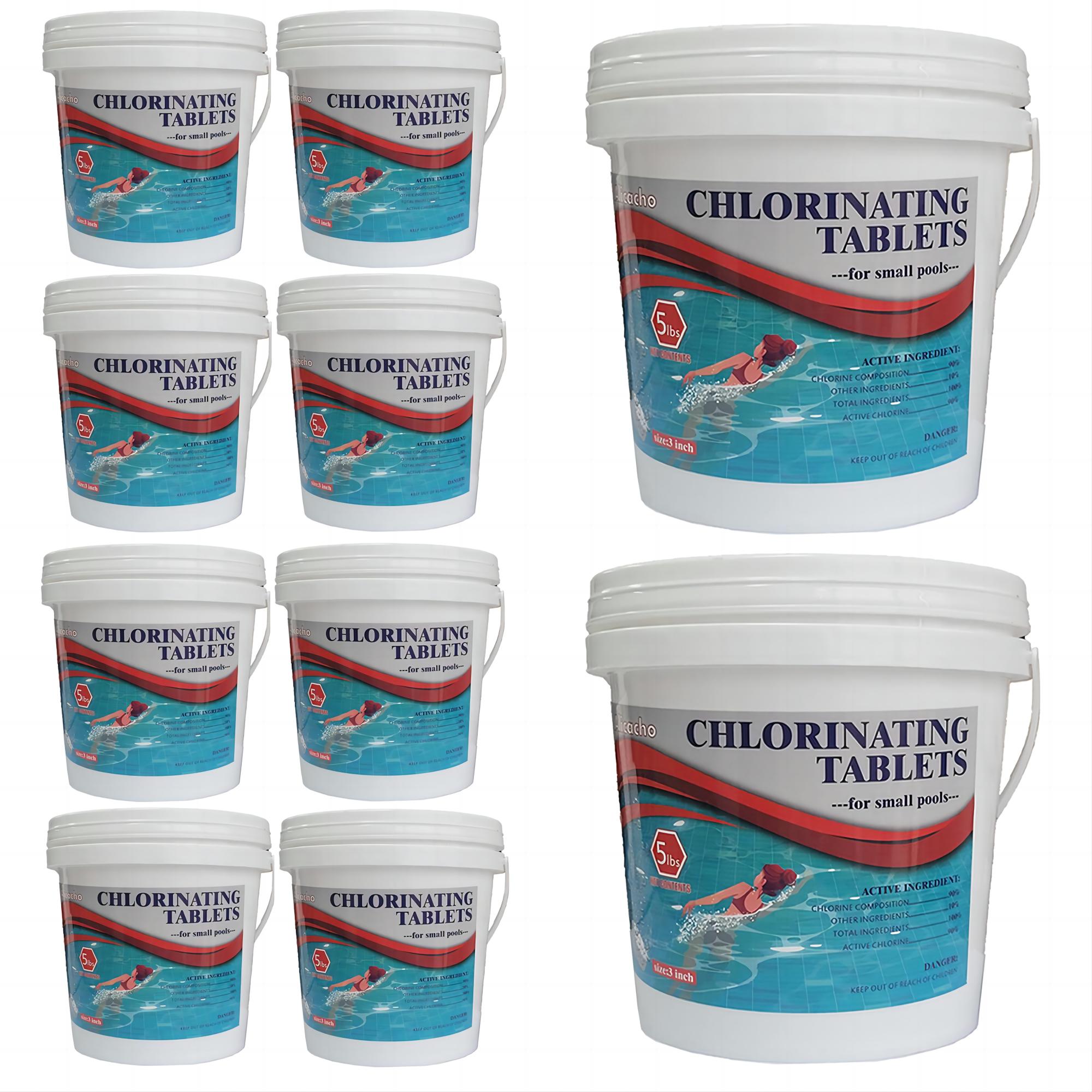There are many things that you have to maintain when you own a pool. You have to make sure that it is clean and safe to swim in. You may have encountered chloramines before, and got rid of it, but do you have any idea what causes chloramines in pools? Well, how these compounds were formed, their possible sources, and the possible methods to eliminate them, must be learned especially if you are new to having a pool.
In this article, we are going to get to know chloramines better, and figure out what causes it, as well as discuss effective methods to elicit them, to be able to achieve a well-maintained pool that anyone could happily swim into.
Part 1. Understanding Chloramines
Before we can eliminate chloramines, we must figure out facts about it first. This will help us easily deal with the root cause of the problem, gaining needed control at the very beginning.
Chloramines are compounds formed when the chemical chlorine is combined with organic nitrogen compounds or ammonia. Once this compound is present in your pools, it can cause irritation in the skin and eyes, may result in unwanted odor, and even reduce the effectiveness of chlorine as a disinfectant. Chloramines are also known as combined chlorine and are poor disinfectants. When we talked about the effectiveness of chloramines, they are 60 to 80 times less effective compared to uncombined free chlorine molecules.
Once contaminants are present in the water, chloramines are continuously formed, most contaminants can be obtained once there is heavy usage of pool water as bathers can introduce them. On the other hand, phosphate, ammonia, and nitrogen compounds are being introduced through rain, or once pools are located near heavy traffic in which smog and fog can be produced. If your pool is also surrounded by a lawn or a garden, it is best to note that garden products contain ammonia, nitrogen, and phosphates which are all considered bad elements for your pools and may cause an increase in the chlorine demand, and may also encourage growth of algae. These products may be washed off by going to the pool possibly during a typhoon or heavy rainfall.

To determine the level of combined chlorine in your pools, you can conduct testing using kits or test strips. To compute it, you can calculate the difference between the free chlorine reading and the total chlorine reading.
By knowing more, we can determine what causes chloramines in pools, and there are through the presence of ammonia, phosphates, and organic nitrogen compounds. Once you are introduced to and affected by chloramines, there are its possible effects as well, these are:
1. Concerns about your health
Chloramines particularly trichloramine can cause your skin and eyes to get irritated. It can also affect your respiratory system, and can even exacerbate asthma symptoms.
2. Presence of unwanted odor and effects on aesthetics
Chloramines are also known to release a distinct chlorine smell which is usually associated with swimming pools, and this may result in an unpleasant atmosphere.
3. Disinfection Efficiency
Compared to free chlorine, chloramines are considered less effective when it comes to disinfecting your pool water. Once they are present, the ability of chlorine to kill viruses, bacteria, as well as other pathogens will be reduced.
Part 2. How Do I Get Rid Of Chloramines In My Pool?
Now that we are equipped with needed knowledge about chloramines, as well as what causes chloramines in pools, let us now determine things that we can do to get rid of them. We must arrive at an effective plan to eliminate chloramines, so it will not affect the effectiveness of chlorine as a disinfectant in our pools.
So, how can we get rid of chloramines in our pools?
1. Boiling
Yes, when you start boiling your water, chloramines can be removed, however, it may take a long time. If you boil 10 gallons of your pool water, free chlorine can be removed in two hours, and on the contrary, it will take you almost 24 hours or more to remove chloramines in your pool water.
2. Carbon Filtration
You can also do carbon filtration. Through the use of a series of granular activated carbon, chloramines can be removed. When you need it for larger applications, catalytic carbon is usually used these days.
3. Campden Tablets
If you are a home brewer, you can use tablets of potassium metabisulfite and use it as a reducing agent to get rid of chloramines from brewing water. This may also affect the taste of the product.
4. Ascorbic Acid
This is also known as Vitamin C; sodium ascorbate or ascorbic acid can neutralize chloramines and chlorine. If this will be used to treat pools, a large amount will be needed. This must be carefully used, as pH can be affected and would drop at the same time. It can also be useful to remove pool stains, but it is considered as too costly if used as chloramine remover.
5. Super Chlorination
Considering that pH is stable, when the right amount of fast-dissolving chlorine is added to your pools until the 10 ppm level is reached will be able to eliminate chloramines in the pool water. Once there is a high level of free chlorine in your pool water, ammonia chlorine bonds will be broken, at a point at which nitrogen or ammonia gas will gas off the surface of your pool.
6. Sodium Thiosulfate
This one is used as chlorine remover which can dechlorinate waste water as well as aquarium water, and same with drinking water for some zoo animals, and even pools that have been accidentally over-chlorinated. It uses reductive chlorination to remove free chlorine and knocks off all the chloramine molecules as well.
7. Ultra-Violet Light
UV systems have been one of the most effective partners of many industries like pharmaceutical industries, dialysis procedures, and even beverage industries, and now they are also starting to be used in pool water disinfection. UV light in particular wavelengths can kill bacteria and pathogens, given a specific length of exposure as well as intensity. That is why it can also be an effective companion to kill and break apart chloramine compounds.
Aside from all of these methods, it can still be said that the most effective process to get rid of chloramines is through pool shocking. Aside from following determined procedures on the label of shocking products, it must also be ensured that pool water is properly tested. You have to make sure that you have a low pH level to be able to obtain great results and reach the so-called Breakpoint Chlorination threshold to attain complete oxidation and get rid of about 15 times the amount of the measured chloramines. When you measure that the level of chloramines in your pools is already 0.3 ppm or higher, that is when you can start shocking your pool.

When shocking your pools, it is recommended that you use PoolClever chlorine granules that can be dissolved faster, make sure to follow the general rule of thumb based on the size of your pool. You can also use it for your weekly maintenance, most especially if your pool is being used most of the time, and you also have high bather loads often. The recommended dose for your weekly maintenance is to add 1 pound of PoolClever chlorine granule for every 10000 gallons of pool water.

Part 3. To Summarize It All
There can be lots of possible reasons why are there many contaminants in your pool water. As a pool owner, it cannot be easily controlled. But as long as you know the precautions, and are maintaining your pool based on your maintenance plan, then everything can be easily monitored. It must be an essential part of your maintenance routine to check the pH level of your pool water, as well as the combined chlorine level or the chloramines level, and the free chlorine.
This will make you aware of the things that you have to watch out for, and the procedures that you have to execute to get rid of all the chloramines that are surely giving not-so-nice effects to your pool water. It is also good that we can figure out what causes chloramines in pools, so we have an idea of things, chemicals, and actions that must always be considered. In this way, the cleanliness, safety, and even the health of your pool water will be secured for a longer time.



